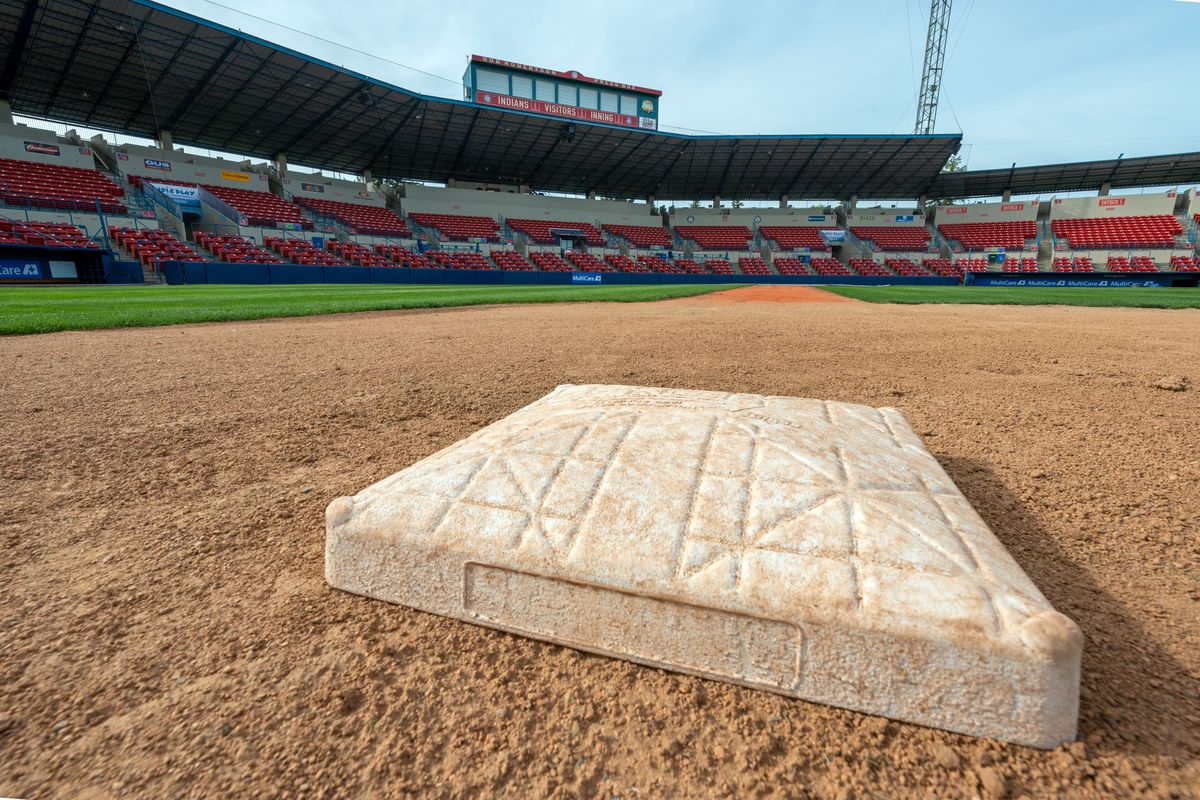Field renovations on deck at Spokane Indians’ Avista Stadium

The Spokane Indians are literally leveling the playing field.
Soon after the end of this week’s High-A West playoff series between the Indians and the Eugene Emeralds, the field at Avista Stadium will undergo a major overhaul that could cost between $200,000 and $230,000.
The Spokane County commissioners this week gave the Indians permission to make the changes. The Indians will pay for the work, but the county owns the stadium and had to sign off on the project.
As part of the renovations, the Indians will tear up the field turf, remove much of the infield and completely redo the playing surface. The new field will be ready for the 2022 season.
Spokane Indians President Chris Duff said there are a few reasons for redoing the field.
For one, the field at Avista Stadium hasn’t been fully renovated since the facility opened in 1958.
“With an old field you start getting some undulations,” Duff said.
In addition to leveling the field, the Indians will install two new sub-irrigation systems that will improve the field’s drainage.
Jeremy Headley, the Indians’ head groundskeeper, said that some rains practically create puddles in the outfield. The leveling and irrigation improvements should prevent water from pooling.
Duff said that drainage upgrade is needed in part because the team has switched from short-season to full-season baseball.
From 1983 through 2019, the Indians were a short-season A team and played about 60 games a year.
In 2020, Major League Baseball announced it was significantly reducing the number of minor league affiliates. As part of a wave of minor league restructuring throughout the country – a move that cost many communities their baseball teams – the Indians got bumped up to High A.
High A teams play about 120 games a year and their seasons start sooner. Duff explained that because the team will be playing more games in the rainy months of April and May, the field’s drainage issues are a more serious issue.
In addition to puddles, significant rains can make the field soft and unplayable, Duff said. On top of that, heavy rains sometimes flood the visitor’s dugout and the tunnel to the visitor’s clubhouse.
Duff said the renovations will hopefully be done before the field freezes in the coming months. It’s better to have the new turf installed before winter, he said, so the roots can get established before spring.
More upgrades are coming to Avista Stadium in the next few years.
The Indians told the Spokane County Commissioners that this fall’s field work is an interim project and “should accommodate play for a year or two in anticipation of a major reconstruction effort necessary to dramatically improve conditions across the entire field.”
Duff said leveling the field and improving the drainage needed to happen no matter what, but Major League Baseball is requiring some of the changes that will come to Avista Stadium in the next few years.
In 2020, MLB raised its standards for minor league fields.
The new standards apply to stadium lighting, player nutrition facilities, batting cages, weight rooms and more. The Indians need to modify Avista Stadium in order to comply with the new MLB rules.
“I do anticipate it being a mix of fan amenities and some player amenities,” Duff said.
Duff said he doesn’t know the specifics yet about what upgrades the team will make, but clubhouse upgrades are likely.
MLB’s new clubhouse rules will make locker rooms more spacious. That will benefit players because minor league locker rooms have gotten more crowded over the years.
Minor league teams used to be capped at 25-man rosters. That number has risen to 35, plus teams have more coaches than they did in the past. Many newer minor league facilities won’t have to make any changes, but older stadiums will have to increase the size of their clubhouses so that they’re a minimum of 1,000 square feet.
The Indians will likely have to create separate facilities for women, too, Duff said. MLB is requiring teams to offer locker rooms for women, as more women become professional baseball coaches and umpires.